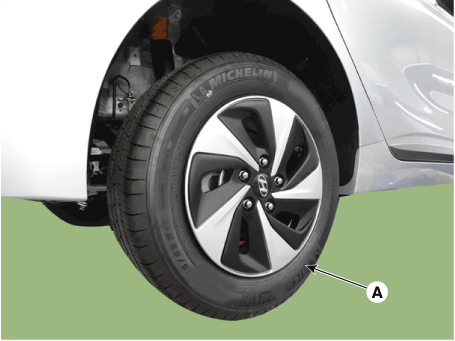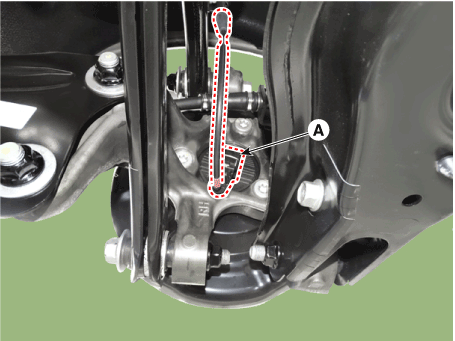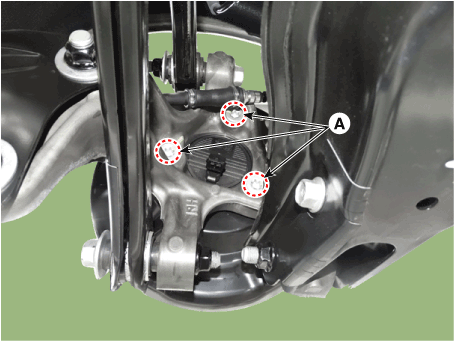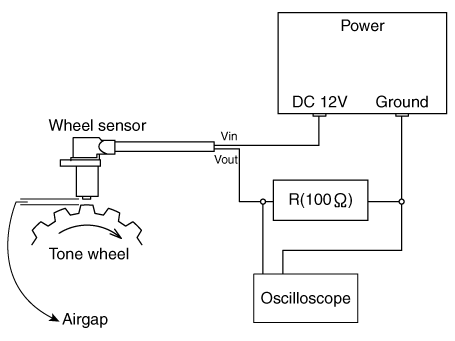Hyundai Ioniq: ESP(Electronic Stability Program) System / Rear Wheel Speed Sensor. Repair procedures
Hyundai Ioniq (AE) 2017-2025 Service Manual / Brake System / ESP(Electronic Stability Program) System / Rear Wheel Speed Sensor. Repair procedures
| Removal |
| 1. | Loosen the wheel nuts slightly. Raise the vehicle, and make sure it is securely supported. |
| 2. | Remove the front wheel and tire (A) from the rear hub.
|
| 3. | Disconnect the rear wheel speed sensor connector (A).
|
| 4. | Loosen the mounting bolts (A) and then remove the hub bearing.
|
| 5. | Installation in the reverse of removal. |
| Inspection |
| 1. | Measure the output voltage between the terminal of the wheel speed sensor and the body ground.
|
| 2. | Compare the change of the output voltage of the wheel speed sensor to the normal change of the output voltage as shown below.
|
Other information:
Hyundai Ioniq (AE) 2017-2025 Service Manual: Rear Transverse Trim. Components and components location
C..
Hyundai Ioniq (AE) 2017-2025 Service Manual: Repair procedures
Removal and installation • Check for foreign objects caught in the flap and linkage area.1.Disconnect the battery negative terminal.2.Remove the front bumper.(Refet to Body - "Front Bumper")3.Remove the radiator grille...
Categories
- Manuals Home
- 1st Generation Ioniq Owners Manual
- 1st Generation Ioniq Service Manual
- Towing
- How to Disconnect Normal Charger
- Jump Starting
- New on site
- Most important about car
Rear Seats
Folding the rear seat
The rear seatbacks can be folded to facilitate carrying long items or to increase the luggage capacity of the vehicle.
WARNING
Never allow passengers to sit on top of the folded down seatback while the vehicle is moving. This is not a proper seating position and no seat belts are available for use. This could result in serious injury or death in case of an accident or sudden stop. Objects carried on the folded down seatback should not extend higher than the top of the front seatbacks. This could allow cargo to slide forward and cause injury or damage during sudden stops.
Copyright © 2025 www.hioniqae.com







